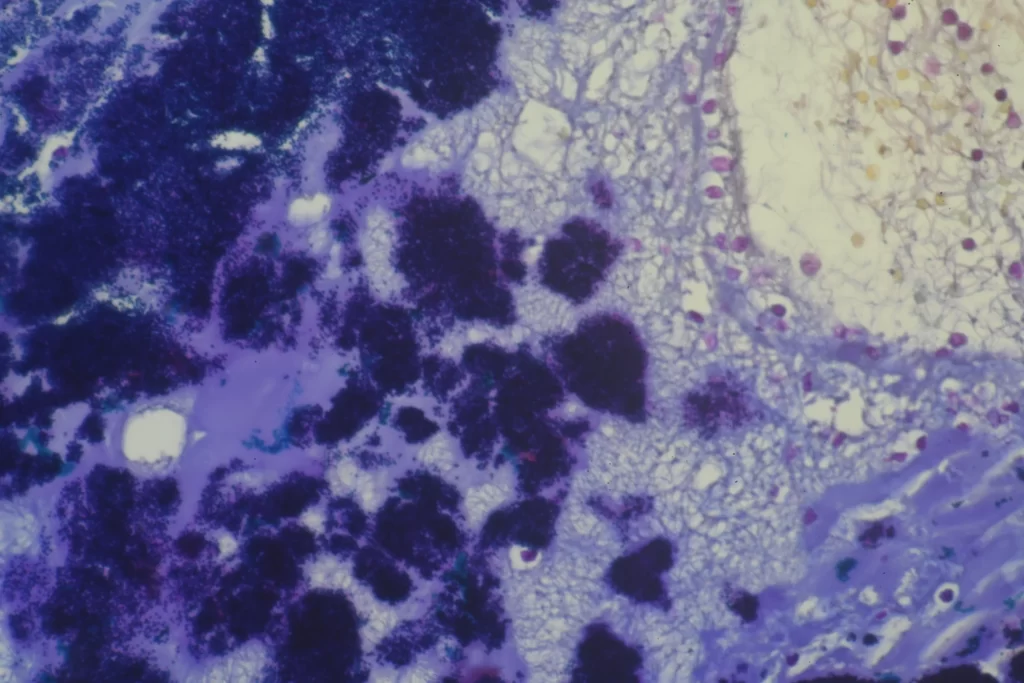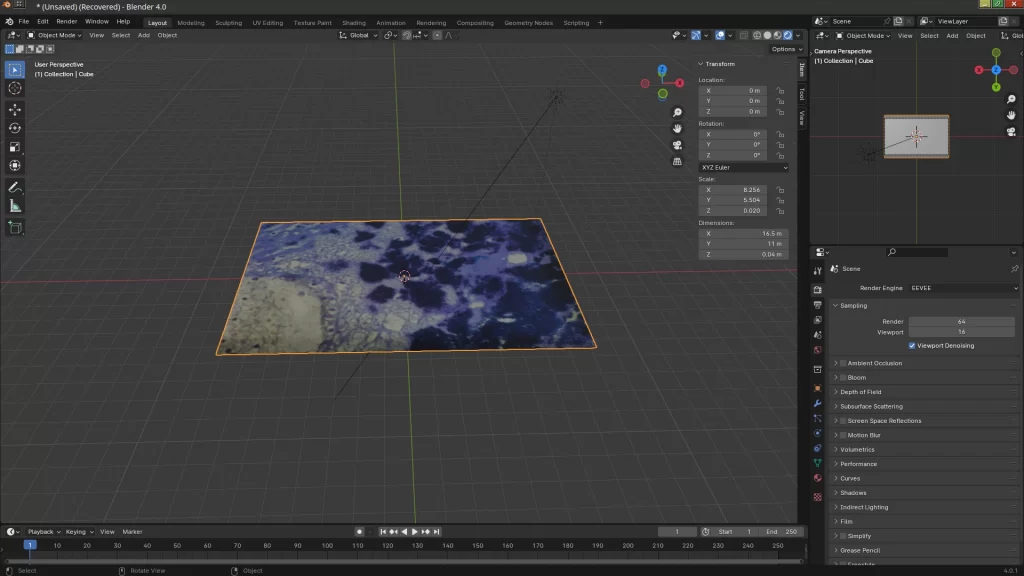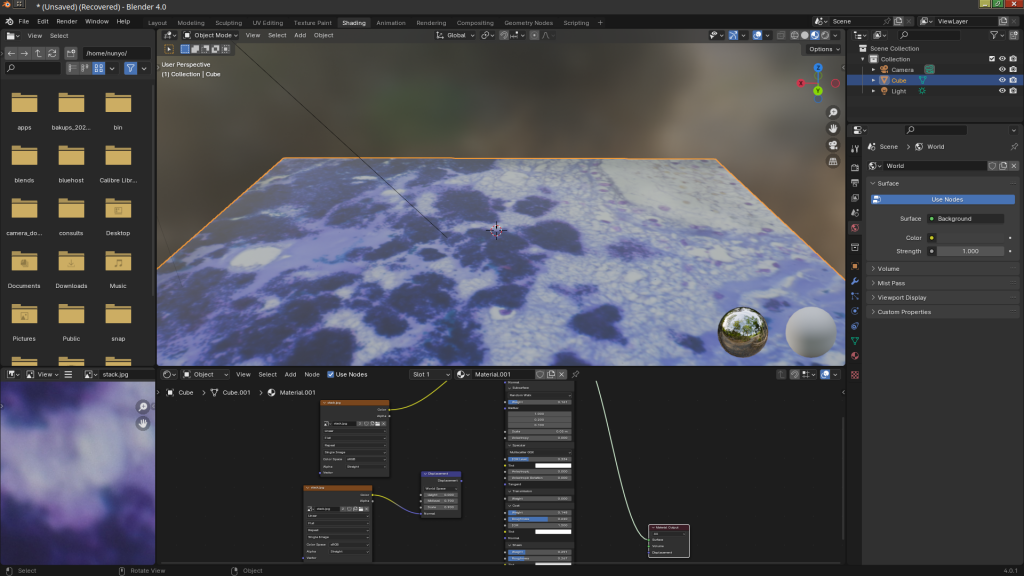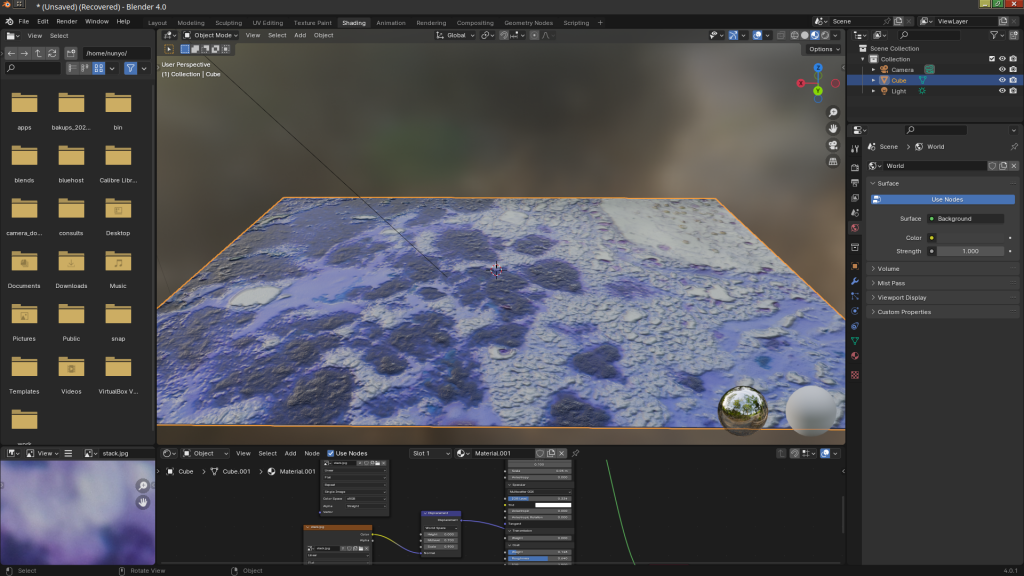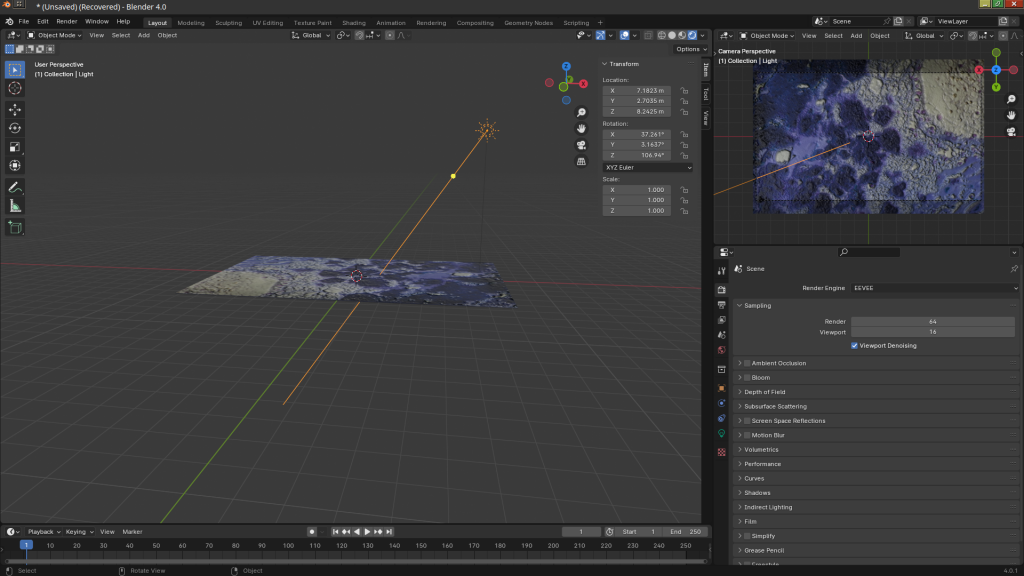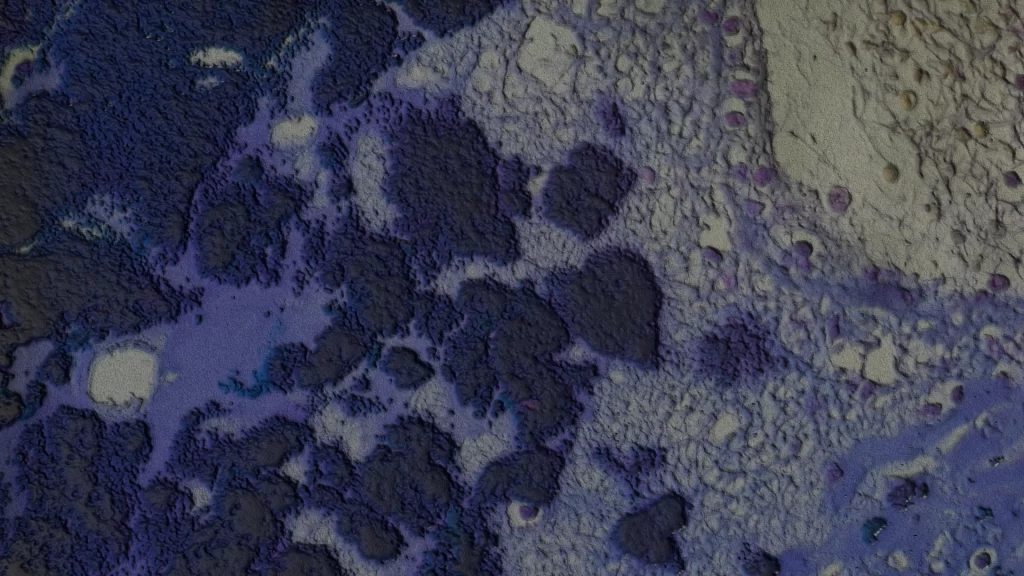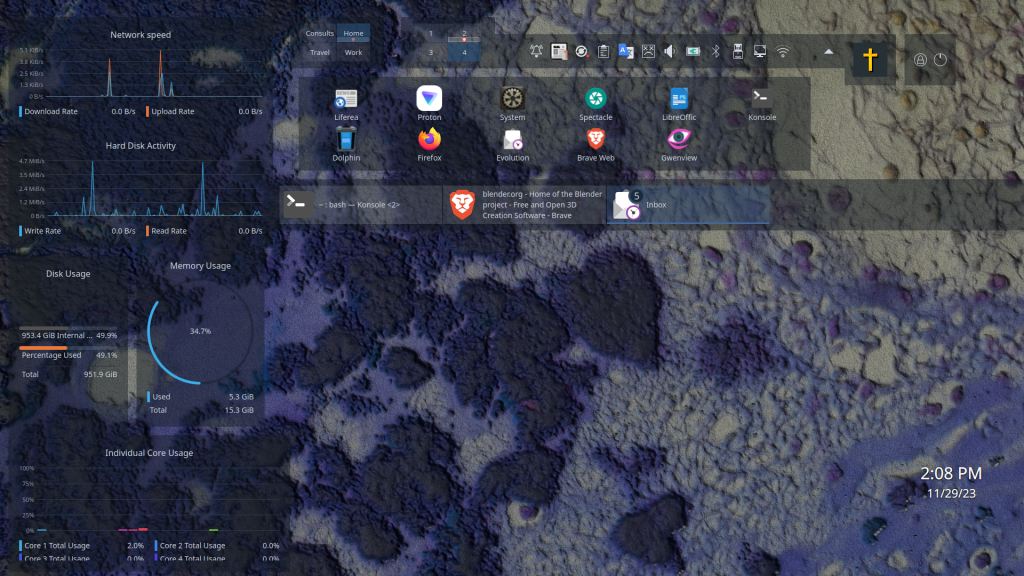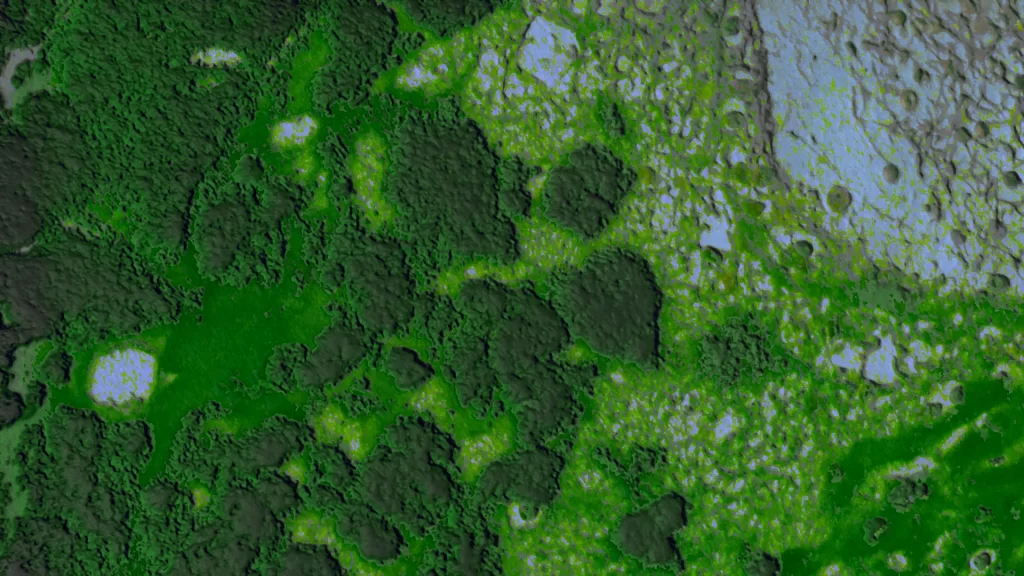One of the things that drew me to pathology was the aesthetics of histology. I find microscopic images fascinating and beautiful. As a hobby, I like to make screen backgrounds from photomicrographs by turning them in to more abstract images. Here’s one simple way I do it. I’m going to use only two free and open source software tools: GIMP (Gnu Image Manipulation Program, www.gimp.org) and Blender (www.blender.org). Both run on Linux, Windows, and Macs.
First, find a photomicrograph that is a little unusual and a little more abstract than ones showing normal architecture (though normal architecture can also be very pretty). For instance, here’s a Gram stain of a vegetation in a case of tricuspid bacterial endocarditis. I chose it because I like blues:
The bacterial clusters are in blue, cellular nuclei are purple and yellow, and fibrin strands are light blue. It’s a little dark. I haven’t done any white balancing or contrast stretching, but that’s good for my purposes since I like dark themes for my computer screen. You can always lighten it up or stretch contrast in GIMP or Photoshop or whatever if you want.
Next, I’ll open a 3D modeling program, such as Blender, and I’ll map the image onto a surface:
Now, I’ll add a so-called “displacement map” to it, which causes the surface to rise or fall depending on the color or brightness.
Before attaching the displacement map node in Blender:
After:
Now, I’ll add a light at a slight angle to throw some shadows:
And here’s the final image. As always, double click or right click to see the big version (depending on your browser and OS):
And as a screen background:
There’s a learning curve with using Blender, of course, but given that, it only takes a few minutes once you learn to use it.
If you don’t like blues, you can play with the color map. For instance, using the “map colors” tool in GIMP, I mapped the blues to greens and the greys to blues, which makes it look a little like an aerial map of a Louisiana swamp, with individual bacterial colonies being individual trees and bushes:
